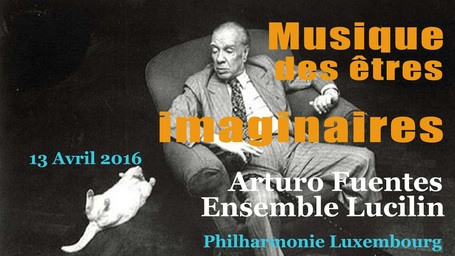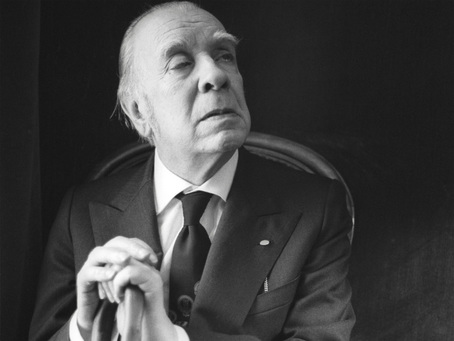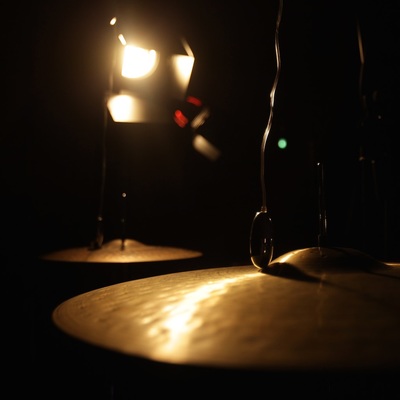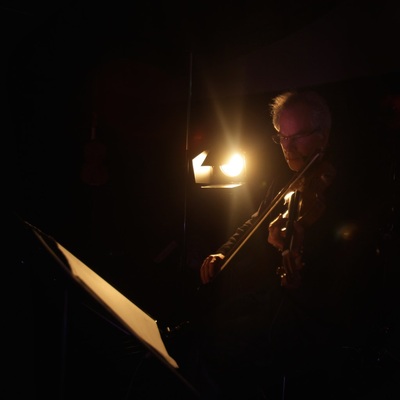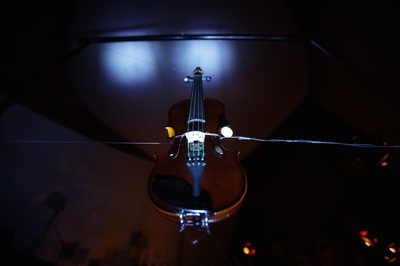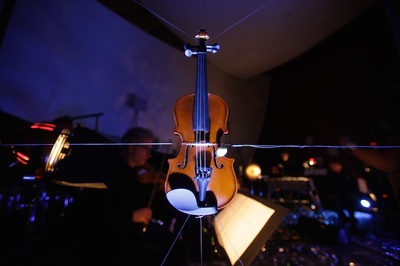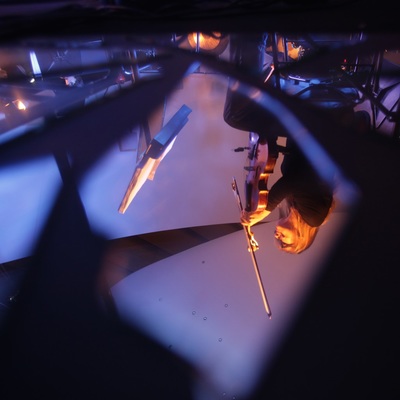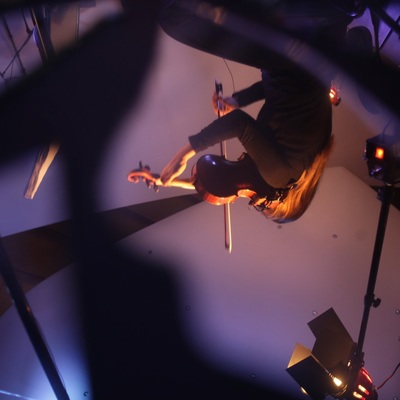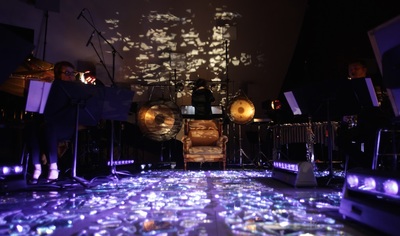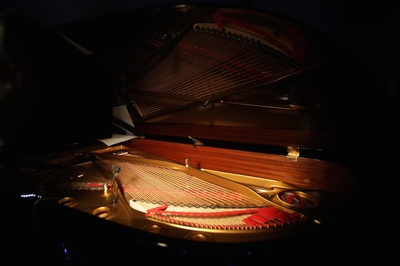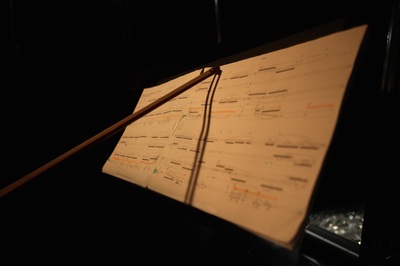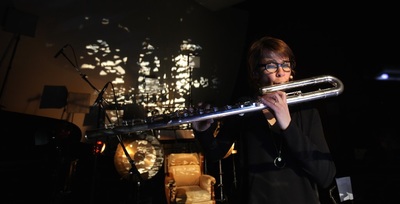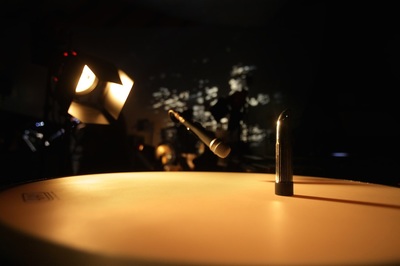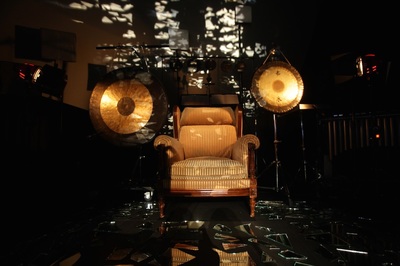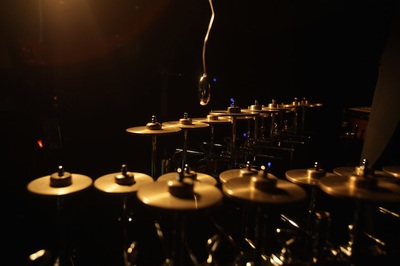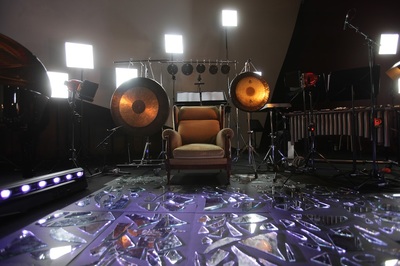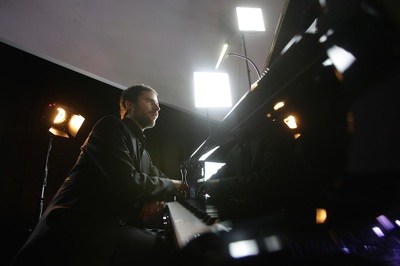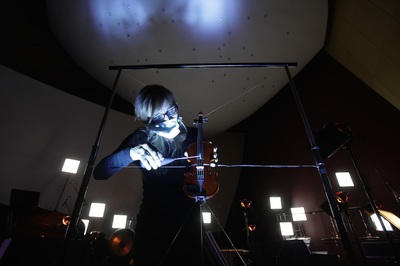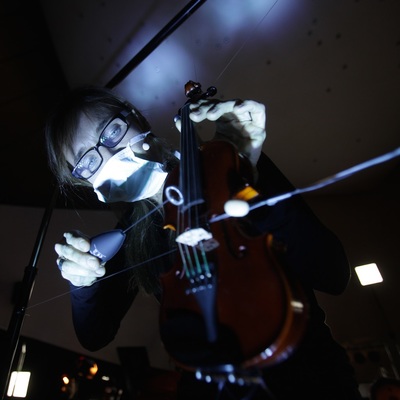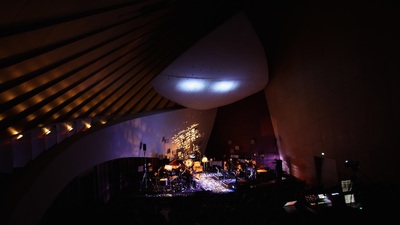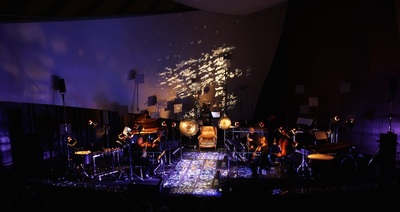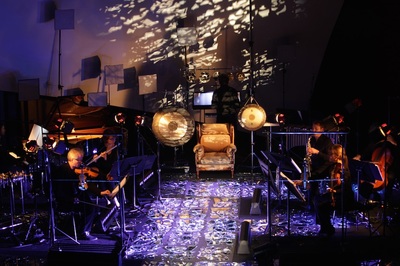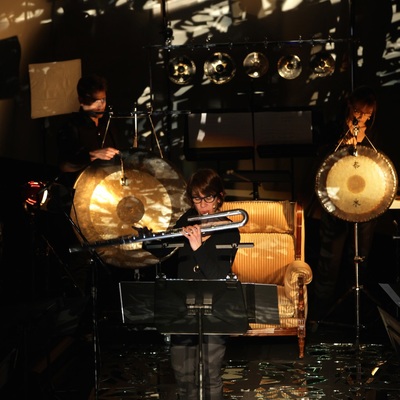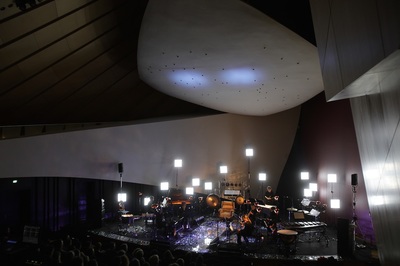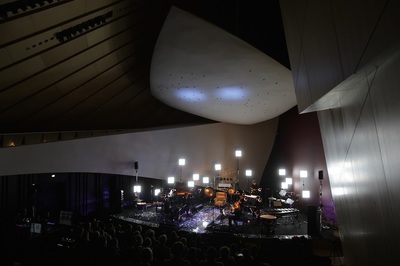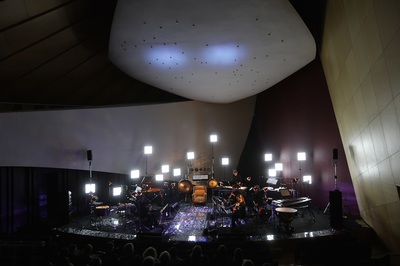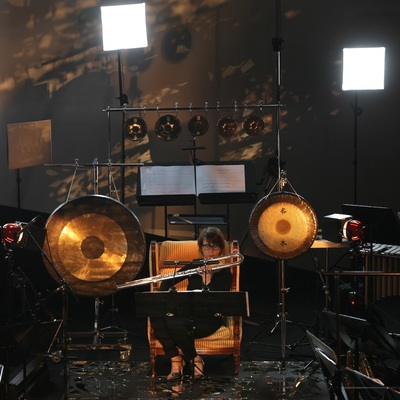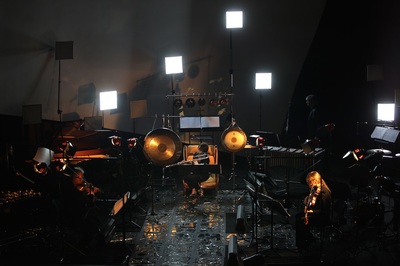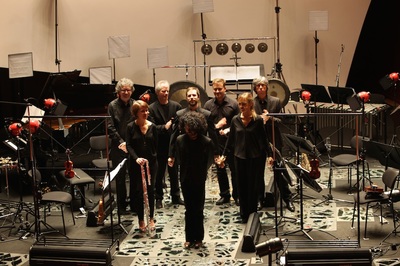Musique des êtres imaginaires
Music of imaginary beings
Music of imaginary beings
|
ENSEMBLE LUCILIN
ARTURO FUENTES |
---
|
concert-fiction for musicians, automaton and electronics 2015-2016
Idea and composition: Arturo Fuentes
Directed by: Arturo Fuentes
Music: United Instruments of Lucilin
Duration: 1 hr.
Music of imaginary beings
for flute, saxophone, percussion, piano, violin, viola, cello, automaton and electronics *without conductor.
Music inspired by the poems "Arte poética" and "Manual de zoología fantástica" written by Jorge Luis Borges.
On the occasion of the thirtieth anniversary of the poet’s death (June 14, 1986).
World premier: April 13, 2016, Philharmonie Luxembourg
Austrian premier: Juin 13 2016, Wiener Konzerthaus
Production and co-production
United Instruments of Lucilin, Philharmonie Luxembourg
Music commissioned by
United Instruments of Lucilin, Philharmonie Luxembourg, Siemens Foundation
With the support of
Ministry of Culture of Luxembourg
Edited by
LondonHall Editions
Florence Martin, head manager
Virginia Flórez, production and diffusion
[email protected] / [email protected] / www.lucilin.lu
Ensemble Lucilin, CARRÉ
1 rue de l'Aciérie L-1112 Luxembourg
TEL/FAX : +352 26 37 43 32
United Instruments of Lucilin, Sophie Deshayes (flute), Olivier Sliepen (saxophone), Guy Frisch (percussion),
Pascal Meyer (piano), André Pons-Valdés (violin), Danielle Hennicot (viola), Jean-Philippe Martignoni (cello).
Idea and composition: Arturo Fuentes
Directed by: Arturo Fuentes
Music: United Instruments of Lucilin
Duration: 1 hr.
Music of imaginary beings
for flute, saxophone, percussion, piano, violin, viola, cello, automaton and electronics *without conductor.
Music inspired by the poems "Arte poética" and "Manual de zoología fantástica" written by Jorge Luis Borges.
On the occasion of the thirtieth anniversary of the poet’s death (June 14, 1986).
World premier: April 13, 2016, Philharmonie Luxembourg
Austrian premier: Juin 13 2016, Wiener Konzerthaus
Production and co-production
United Instruments of Lucilin, Philharmonie Luxembourg
Music commissioned by
United Instruments of Lucilin, Philharmonie Luxembourg, Siemens Foundation
With the support of
Ministry of Culture of Luxembourg
Edited by
LondonHall Editions
Florence Martin, head manager
Virginia Flórez, production and diffusion
[email protected] / [email protected] / www.lucilin.lu
Ensemble Lucilin, CARRÉ
1 rue de l'Aciérie L-1112 Luxembourg
TEL/FAX : +352 26 37 43 32
United Instruments of Lucilin, Sophie Deshayes (flute), Olivier Sliepen (saxophone), Guy Frisch (percussion),
Pascal Meyer (piano), André Pons-Valdés (violin), Danielle Hennicot (viola), Jean-Philippe Martignoni (cello).
Arte poética
Jorge Luis Borges
Mirar el río hecho de tiempo y agua
y recordar que el tiempo es otro río,
saber que nos perdemos como el río
y que los rostros pasan como el agua.
Sentir que la vigilia es otro sueño
que sueña no soñar y que la muerte
que teme nuestra carne es esa muerte
de cada noche, que se llama sueño.
Ver en el día o en el año un símbolo
de los días del hombre y de sus años,
convertir el ultraje de los años
en una música, un rumor y un símbolo,
ver en la muerte el sueño, en el ocaso
un triste oro, tal es la poesía
que es inmortal y pobre. La poesía
vuelve como la aurora y el ocaso.
A veces en las tardes una cara
nos mira desde el fondo de un espejo;
el arte debe ser como ese espejo
que nos revela nuestra propia cara.
Cuentan que Ulises, harto de prodigios,
lloró de amor al divisar su Itaca
verde y humilde. El arte es esa Itaca
de verde eternidad, no de prodigios.
También es como el río interminable
que pasa y queda y es cristal de un mismo
Heráclito inconstante, que es el mismo
y es otro, como el río interminable.
Jorge Luis Borges
Mirar el río hecho de tiempo y agua
y recordar que el tiempo es otro río,
saber que nos perdemos como el río
y que los rostros pasan como el agua.
Sentir que la vigilia es otro sueño
que sueña no soñar y que la muerte
que teme nuestra carne es esa muerte
de cada noche, que se llama sueño.
Ver en el día o en el año un símbolo
de los días del hombre y de sus años,
convertir el ultraje de los años
en una música, un rumor y un símbolo,
ver en la muerte el sueño, en el ocaso
un triste oro, tal es la poesía
que es inmortal y pobre. La poesía
vuelve como la aurora y el ocaso.
A veces en las tardes una cara
nos mira desde el fondo de un espejo;
el arte debe ser como ese espejo
que nos revela nuestra propia cara.
Cuentan que Ulises, harto de prodigios,
lloró de amor al divisar su Itaca
verde y humilde. El arte es esa Itaca
de verde eternidad, no de prodigios.
También es como el río interminable
que pasa y queda y es cristal de un mismo
Heráclito inconstante, que es el mismo
y es otro, como el río interminable.
Gallery
première at the Philharmonie Luxembourg, 13 April 2016
Photos: Sebastien Grebille
première at the Philharmonie Luxembourg, 13 April 2016
Photos: Sebastien Grebille

